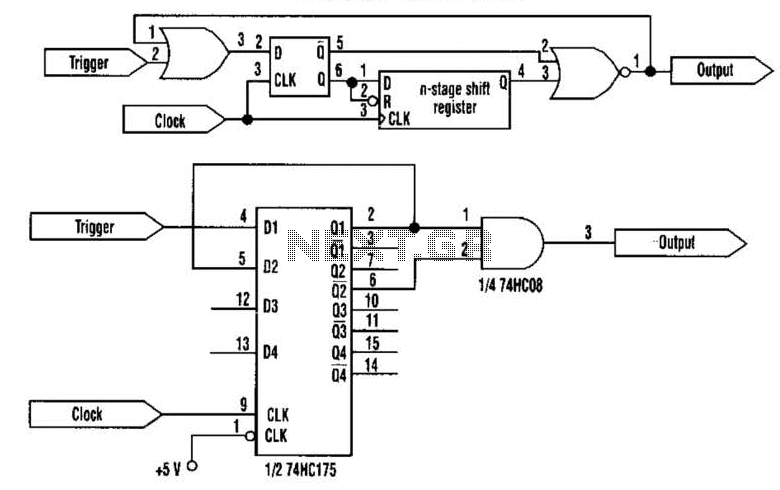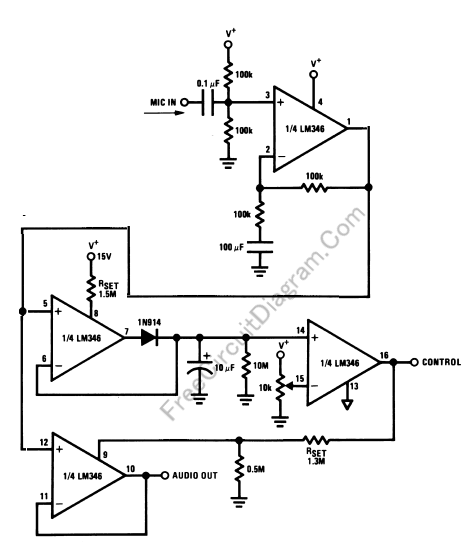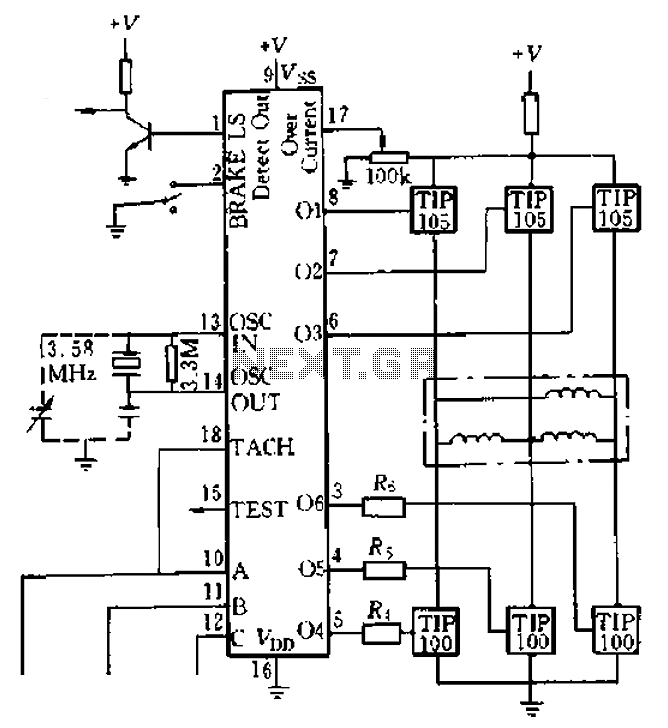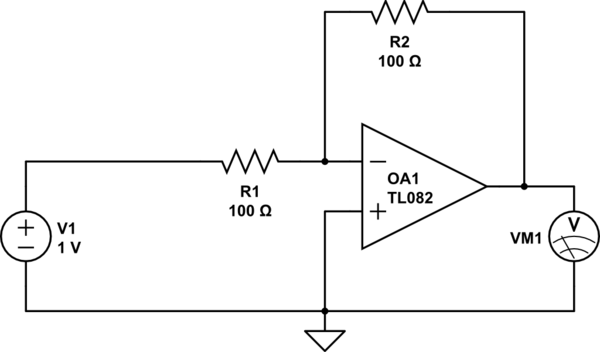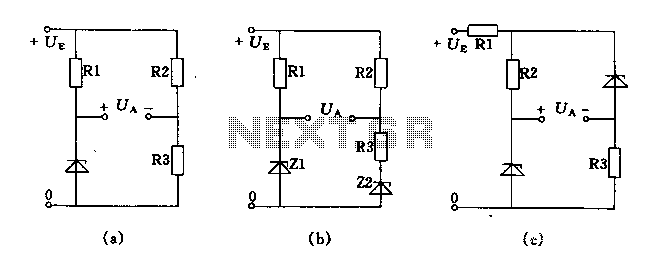
Simple timer circuit MC14541
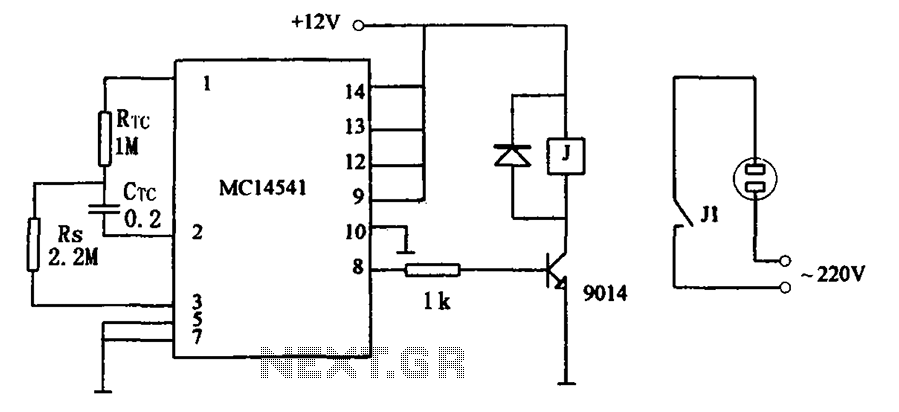
The circuit illustrated in FIG MC14541 is a straightforward timing circuit utilizing the MC14541 integrated circuit (IC). By adjusting the parameter map, the timing can be set for a duration of 3 hours, with options to select various RTC, CTC, and Rs values to achieve the required timing control.
The MC14541 timing circuit is designed to provide precise timing functions for various applications. It operates by employing a combination of resistors (Rs), capacitors, and the integrated circuit itself to generate a stable time delay. The choice of RTC (Real-Time Clock) and CTC (Clock Time Constant) values plays a critical role in defining the timing characteristics of the circuit.
In this circuit, the MC14541 IC serves as the core timing element, which is capable of producing accurate delays through its internal architecture. The timing duration can be set to 3 hours, making it suitable for applications that require long-term timing operations. Adjustments to the parameter map allow for flexibility in timing configurations, which can be tailored to specific requirements.
The selection of resistor and capacitor values influences the timing intervals significantly. For instance, a higher resistance value in conjunction with a larger capacitor will extend the timing duration, while lower values will shorten it. This adaptability enables the circuit to be utilized in various scenarios, from simple timing tasks to more complex applications where precise timing is essential.
Overall, the MC14541 timing circuit is an efficient solution for implementing timing functions, providing versatility through its adjustable parameters and the ability to customize timing durations according to user needs. As shown in FIG MC14541 constituted by a simple timing circuit. The circuit uses IC MC14541 constitute a simple timing circuit. Press the parameter map, the timing for 3 hours, and can choose different RTC, CTC and Rs values. In order to achieve the desired timing control.
The MC14541 timing circuit is designed to provide precise timing functions for various applications. It operates by employing a combination of resistors (Rs), capacitors, and the integrated circuit itself to generate a stable time delay. The choice of RTC (Real-Time Clock) and CTC (Clock Time Constant) values plays a critical role in defining the timing characteristics of the circuit.
In this circuit, the MC14541 IC serves as the core timing element, which is capable of producing accurate delays through its internal architecture. The timing duration can be set to 3 hours, making it suitable for applications that require long-term timing operations. Adjustments to the parameter map allow for flexibility in timing configurations, which can be tailored to specific requirements.
The selection of resistor and capacitor values influences the timing intervals significantly. For instance, a higher resistance value in conjunction with a larger capacitor will extend the timing duration, while lower values will shorten it. This adaptability enables the circuit to be utilized in various scenarios, from simple timing tasks to more complex applications where precise timing is essential.
Overall, the MC14541 timing circuit is an efficient solution for implementing timing functions, providing versatility through its adjustable parameters and the ability to customize timing durations according to user needs. As shown in FIG MC14541 constituted by a simple timing circuit. The circuit uses IC MC14541 constitute a simple timing circuit. Press the parameter map, the timing for 3 hours, and can choose different RTC, CTC and Rs values. In order to achieve the desired timing control.
